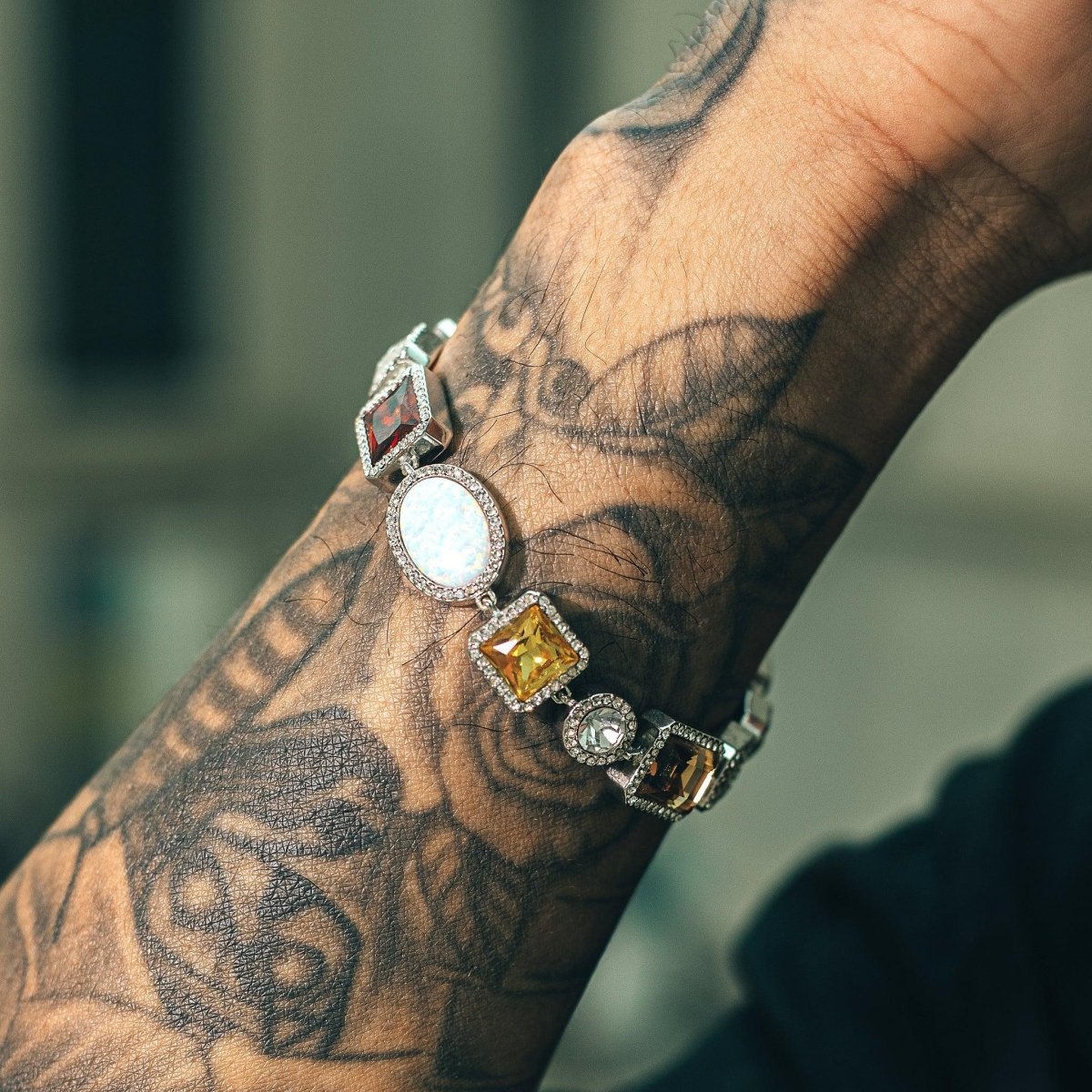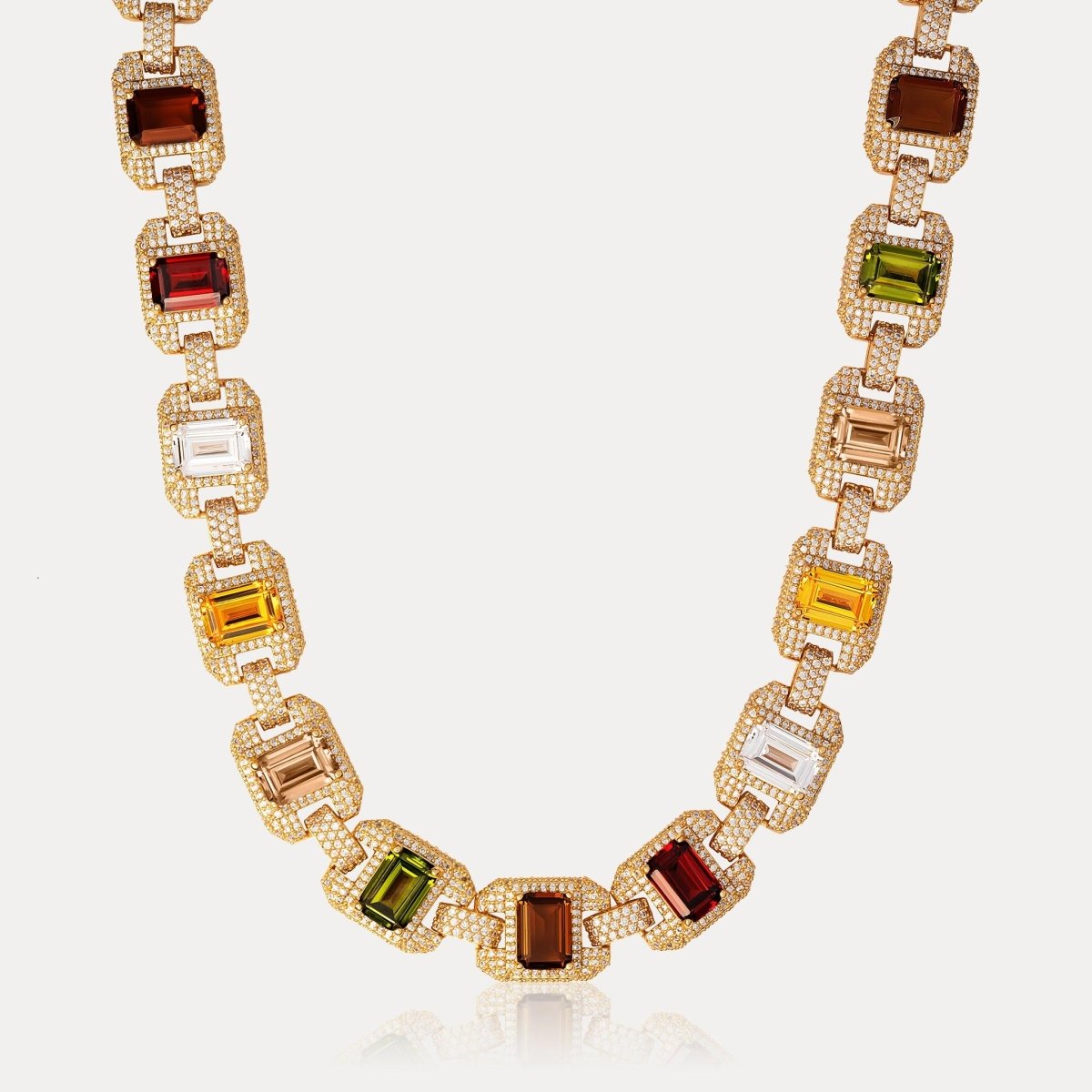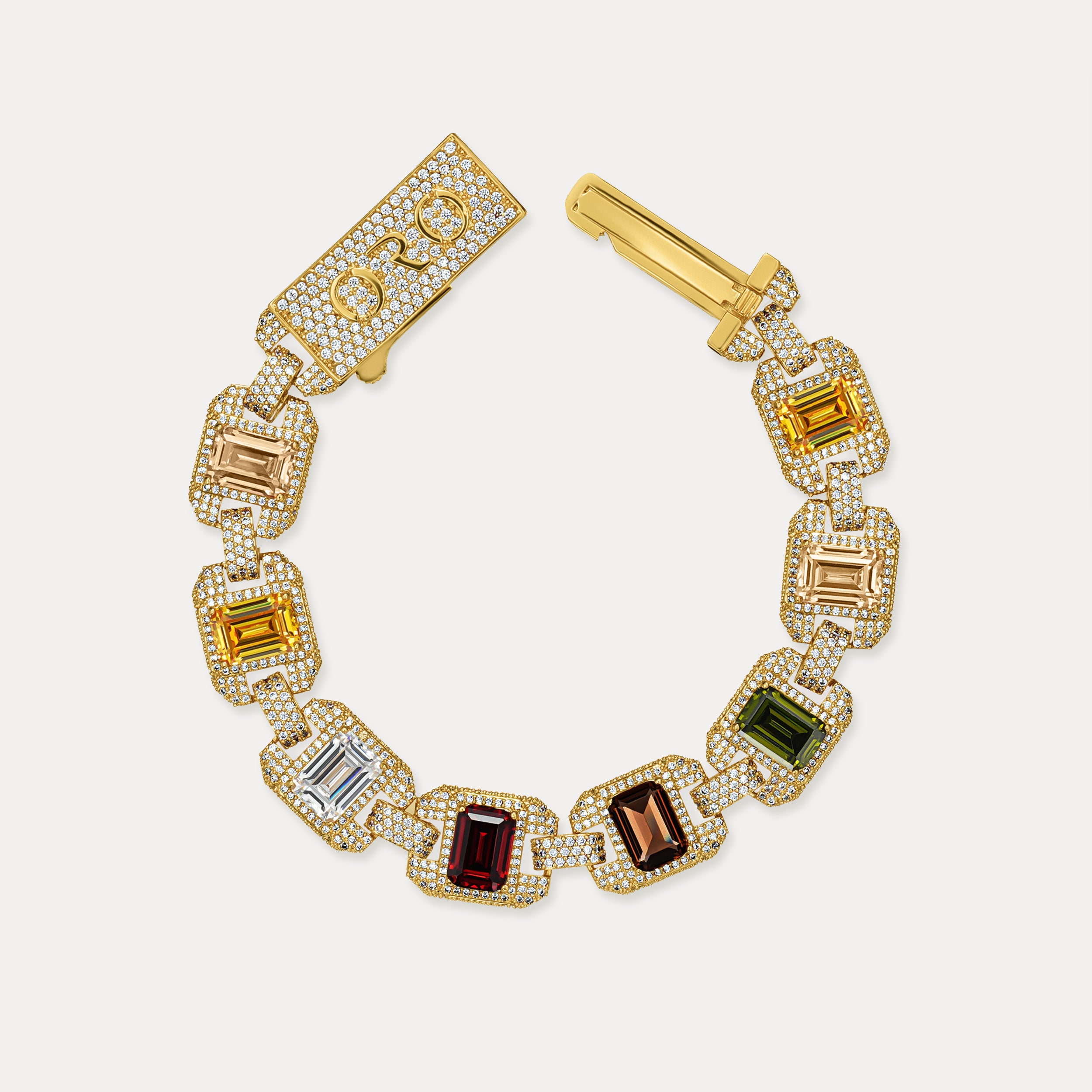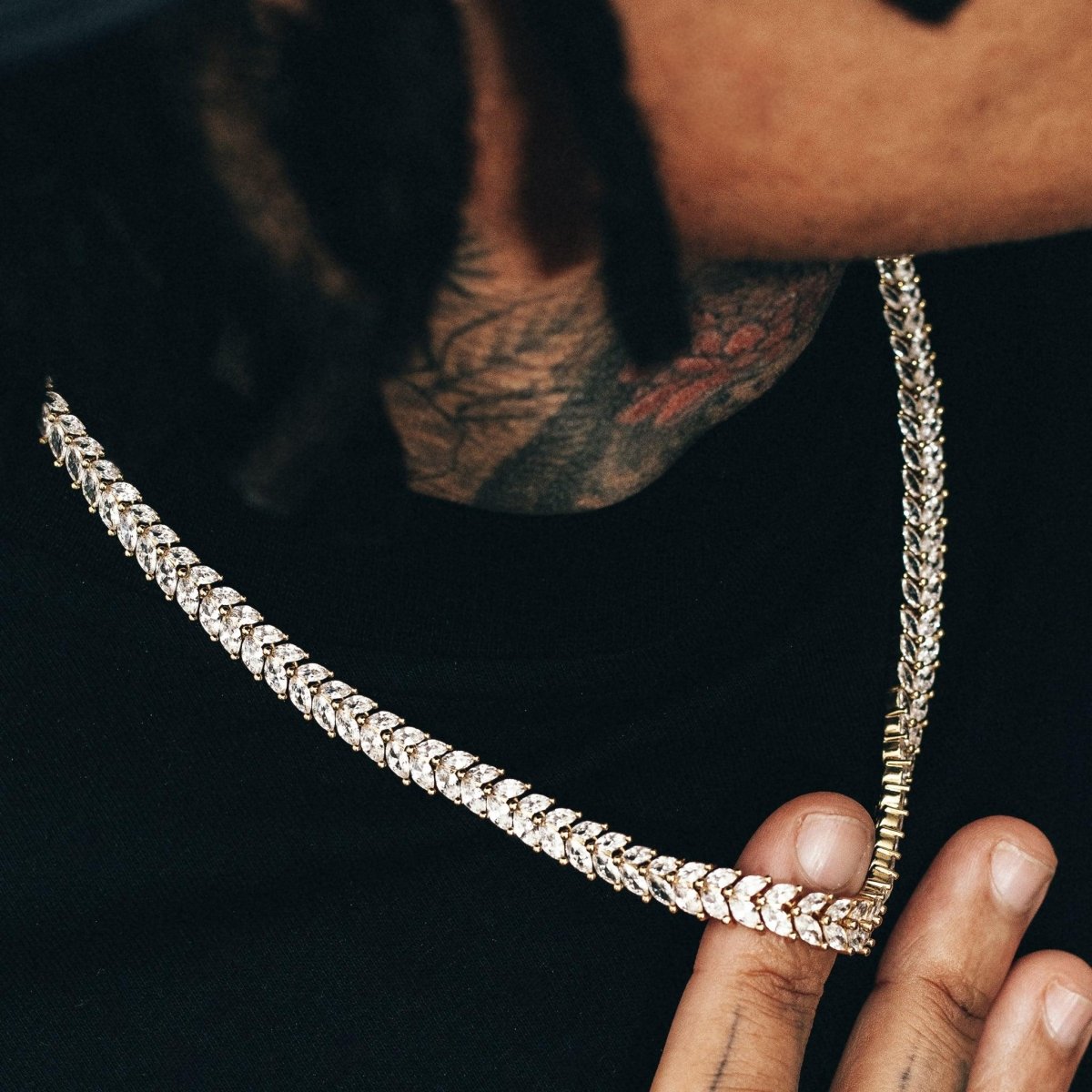Your guide on how to keep gold-plated jewelry from tarnishing
Gold-plated jewelry is a popular and affordable alternative to solid gold jewelry. However, it is prone to tarnishing over time, which can diminish its luster and appearance. To help you maintain the beauty of your gold-plated jewelry, this guide provides valuable insights into understanding gold-plated jewelry, the causes of tarnishing, preventive measures, and tips for prolonging its shine.
Key Takeaways
- Store gold-plated jewelry in a dry and air-tight container to prevent exposure to moisture.
- Avoid wearing gold-plated jewelry when using harsh chemicals, such as cleaning products or perfumes.
- Clean gold-plated jewelry regularly with a soft cloth to remove oils, dirt, and sweat buildup.
- Apply a thin coat of clear nail polish to the inner surface of gold-plated jewelry to create a barrier against skin contact.
- Consider professional re-plating services to restore the shine and luster of gold-plated jewelry.
Understanding Gold-Plated Jewelry
What is Gold-Plated Jewelry?
Gold-plated jewelry is a type of jewelry that has a thin layer of gold electroplated onto a base metal. This process creates the appearance of gold jewelry at a more affordable price. Gold-plated jewelry is not solid gold and may tarnish over time due to various factors such as exposure to moisture, contact with chemicals, and skin pH and sweat. It offers an attractive option for accessorizing without the high cost of solid gold jewelry.
How is Gold-Plated Jewelry Made?
Gold-plated jewelry is made through a process called electroplating, where a thin layer of gold is deposited onto the surface of a base metal. This process involves using an electric current to attract and bond the gold to the metal, creating a durable and lustrous finish. The base metal, often copper or silver, provides the structure and support for the gold layer, resulting in affordable and stylish jewelry pieces. The thickness of the gold layer, measured in microns, determines the quality and longevity of the plating. A thicker layer of gold offers better resistance to tarnishing and wear.
Pros and Cons of Gold-Plated Jewelry
Gold-plated jewelry is a popular and affordable alternative to solid gold jewelry. It is made by covering a base metal with a thin layer of gold through a process called electroplating. This creates the appearance of gold at a fraction of the cost. Gold-plated jewelry offers the advantage of being fashionable and accessible, but it may tarnish over time due to various factors.
Causes of Tarnishing in Gold-Plated Jewelry
Exposure to Moisture
Exposure to moisture can accelerate the tarnishing process of gold-plated jewelry. When moisture comes into contact with the metal, it can lead to oxidation and discoloration. To prevent this, it's important to keep gold-plated jewelry dry and avoid prolonged exposure to humidity. Consider using a jewelry box with a desiccant to absorb moisture when storing your pieces. Additionally, wiping the jewelry with a soft, dry cloth after wearing it can help remove any residual moisture and maintain its luster.
Contact with Chemicals
When it comes to Contact with Chemicals, it's important to be mindful of the substances that can cause tarnishing. Chemicals such as chlorine, bleach, and sulfur compounds are known to react with the gold plating, leading to discoloration and tarnish. To minimize exposure, it's advisable to remove gold-plated jewelry before using cleaning products, swimming in chlorinated pools, or engaging in activities that involve contact with harsh chemicals. Additionally, consider using protective gloves when handling chemicals to prevent direct contact with the jewelry. Being cautious with chemical exposure can significantly extend the lifespan of gold-plated jewelry.
Skin pH and Sweat
Skin pH and sweat can have a significant impact on the tarnishing of gold-plated jewelry. Skin pH refers to the acidity or alkalinity of the skin, which can vary from person to person. Sweat contains salts and minerals that can react with the metal, leading to tarnishing. It's important to be mindful of these factors when wearing and caring for gold-plated jewelry.
To minimize the effects of skin pH and sweat on gold-plated jewelry, consider the following:
- Wipe Jewelry After Wear: Gently wipe the jewelry with a soft, dry cloth after wearing to remove any accumulated sweat or oils.
- Avoid Moisture: Store the jewelry in a dry environment and avoid wearing it during activities that may cause excessive sweating.
- Regular Cleaning: Clean the jewelry regularly using a mild soap and water solution to remove sweat and oils that may have accumulated.
Tip: Consider using a jewelry polishing cloth to gently buff the jewelry and maintain its shine.
Preventive Measures for Tarnish Prevention
Proper Storage and Care
Proper storage and care are essential for maintaining the shine and longevity of gold-plated jewelry.
- Store gold-plated jewelry in a dry, airtight container to minimize exposure to moisture and humidity.
- Keep jewelry away from direct sunlight and extreme temperatures to prevent discoloration and tarnishing.
- Use a soft, non-abrasive cloth to gently wipe the jewelry after each wear to remove oils and dirt.
Regular cleaning and maintenance play a crucial role in preventing tarnishing and preserving the beauty of gold-plated jewelry.
- Clean jewelry with a mild soap and water solution, and pat dry with a soft cloth to remove any residues.
- Inspect jewelry regularly for signs of wear or damage, and address any issues promptly to prevent tarnishing.
- Consider professional cleaning and inspection at least once a year to maintain the quality and appearance of the jewelry.
Proper care and maintenance will ensure that your gold-plated jewelry remains radiant and lustrous for years to come.
Avoiding Contact with Harsh Substances
To maintain the integrity of gold-plated jewelry, it's crucial to avoid contact with harsh substances. Harsh substances such as bleach, ammonia, and acetone can cause the gold plating to deteriorate. Additionally, abrasive materials like sandpaper and rough fabrics should be kept away from gold-plated jewelry. Always remove gold-plated jewelry before engaging in activities that involve exposure to harsh substances. Remember, prevention is key to preserving the luster and longevity of your gold-plated jewelry. Consider the following tips to protect your jewelry from damage:
- Store your jewelry in a soft pouch or cloth to prevent scratches and minimize contact with harsh substances.
- Avoid wearing gold-plated jewelry while cleaning, swimming, or using household chemicals.
- Regularly inspect your jewelry for signs of wear and tear, and address any issues promptly to prevent further damage.
Tip: When in doubt, it's best to err on the side of caution and remove your gold-plated jewelry before engaging in activities that may expose it to harsh substances.
Regular Cleaning and Maintenance
To maintain the shine of gold-plated jewelry, consider using clear nail polish on areas that come into direct contact with the skin. This creates a protective barrier and reduces the risk of tarnishing. Additionally, avoid exposing gold-plated jewelry to water and sweat as these can accelerate tarnishing. Professional re-plating services can help restore the shine and luster of gold-plated jewelry, extending its lifespan and maintaining its aesthetic appeal. Remember, proper care and maintenance are essential for preserving the beauty of gold-plated jewelry.
Tips for Prolonging the Shine of Gold-Plated Jewelry
Using Clear Nail Polish
Using clear nail polish is a popular method for protecting gold-plated jewelry from tarnishing. Clear nail polish creates a protective barrier between the jewelry and external factors, such as moisture and chemicals. It's important to apply the nail polish to areas of the jewelry that come into direct contact with the skin, as these are more prone to tarnishing. Ensure that the jewelry is clean and dry before applying the nail polish to achieve the best results.
- Apply a thin, even layer of clear nail polish to the areas of the jewelry that are in constant contact with the skin.
- Allow the nail polish to dry completely before wearing the jewelry to prevent smudging or uneven application.
- Reapply the clear nail polish every few months or as needed to maintain the protective barrier.
Tip: Use a gentle nail polish remover to remove the old layer of clear nail polish before reapplying a new layer for optimal protection.
Avoiding Water and Sweat Exposure
To maintain the shine of gold-plated jewelry, it's crucial to minimize exposure to water and sweat. These elements can accelerate tarnishing and diminish the luster of the jewelry. Consider using a soft cloth to gently wipe off any moisture or sweat after wearing the jewelry. Additionally, store the jewelry in a dry, cool place to prevent excessive exposure to these elements.
- Avoid wearing gold-plated jewelry during activities that involve heavy sweating or water exposure.
- Wipe the jewelry with a soft, dry cloth after exposure to sweat or moisture.
- Store the jewelry in a dry, cool place away from moisture and humidity.
Tip: Consider applying a thin layer of clear nail polish to areas of the jewelry that come into direct contact with sweat or moisture to provide an extra barrier against tarnishing.
Professional Re-Plating Services
To maintain the shine of gold-plated jewelry, it's essential to take proper care and follow preventive measures. Using clear nail polish can provide a protective layer, preventing tarnishing caused by exposure to moisture and chemicals. Avoiding water and sweat exposure is crucial for preserving the shine, as these can accelerate tarnishing. Professional re-plating services can restore the shine of gold-plated jewelry, extending its lifespan and maintaining its aesthetic appeal. Consider these tips to keep your gold-plated jewelry looking its best for longer.
Conclusion
In conclusion, it is important to understand the nature of gold-plated jewelry and the factors that contribute to its tarnishing. By being aware of the causes of tarnishing, individuals can take preventive measures to maintain the shine and luster of their gold-plated jewelry. Proper storage, regular cleaning, and avoiding contact with harsh substances are essential for preserving the appearance of gold-plated jewelry. Additionally, utilizing clear nail polish, minimizing exposure to water and sweat, and seeking professional re-plating services can further prolong the lifespan of gold-plated jewelry. With these tips and preventive measures, individuals can enjoy their gold-plated jewelry for longer periods without the worry of tarnishing.
Frequently Asked Questions
How long does gold-plated jewelry last before tarnishing?
The longevity of gold-plated jewelry depends on various factors such as the thickness of the gold layer, frequency of wear, and exposure to harsh substances. With proper care, it can last for a considerable amount of time.
Can I wear gold-plated jewelry in the shower?
It is not recommended to wear gold-plated jewelry in the shower as exposure to water and soap can accelerate tarnishing. It's best to remove the jewelry before showering or swimming.
Does skin type affect the tarnishing of gold-plated jewelry?
Yes, skin pH and sweat can affect the tarnishing of gold-plated jewelry. Individuals with higher acidity levels in their sweat may experience faster tarnishing of the jewelry.
How should I clean gold-plated jewelry?
To clean gold-plated jewelry, use a soft cloth and mild soapy water to gently wipe away any dirt or residue. Avoid using harsh chemicals or abrasive materials that can damage the gold layer.
Can I apply clear nail polish to prevent tarnishing?
Yes, applying a thin layer of clear nail polish to the metal parts of the jewelry can create a protective barrier and help prevent tarnishing. However, reapplication may be necessary over time.
Is it possible to re-plate gold-plated jewelry?
Yes, professional re-plating services are available to restore the gold layer of jewelry that has tarnished. This process involves stripping off the old layer and applying a new layer of gold to the jewelry.
Best Sellers



















































Leave a comment
This site is protected by hCaptcha and the hCaptcha Privacy Policy and Terms of Service apply.